
For central tables, you can determine the development of the child. Let's get acquainted with them more.
The content of the article
Each mother knows that as the baby is growing up every month, it is necessary to record the growth and weight of the baby, the volumes of its head and chest. These data doctor relates to the indicators of special tables that are called centers.
Such a comparison of the indicators of the development of a particular child with regulatory makes it possible to understand whether the baby develops in full compliance with age, whether the proportionality is observed in the structure of its body, as well as determine if there is no deviations. After all, the sooner the most insignificant problem was found, the easier it is to solve it.
What are central tables?
Thus, a central way to assess the general physical condition of the child and its development is based on comparing the indicators of this infant and averaged indicators, which are derived on the basis of mass assessments of groups of children of similar age.
As already mentioned, in the central tables relate information about the growth and mass of the body, the size of the scuffing of the head and chest. Based on the data recorded in the central tables, you can build a diagram of development, i.e. Display in the graphical form of changes of anthropometric parameters as they grow up. Such data are grouped separately by sexual basis, since the characteristics of the indicators are quite significantly dependent on this factor.
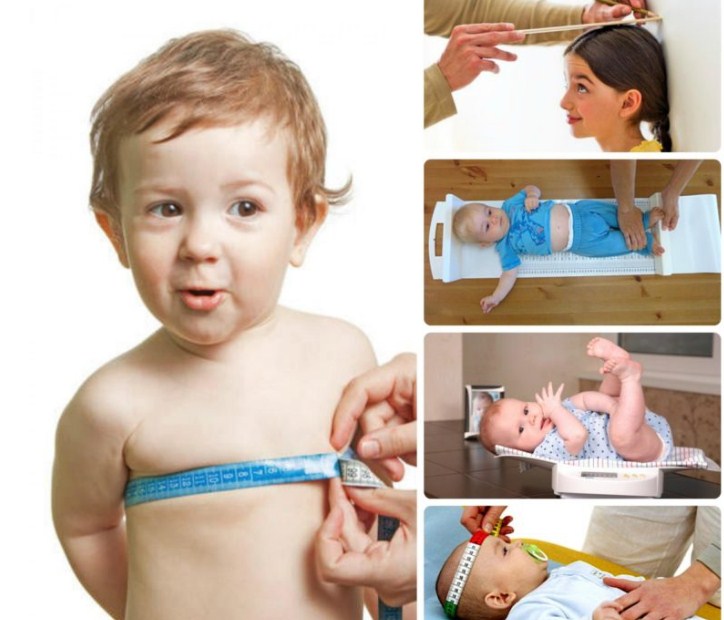
Central tables
After performing all measurements and verify them with the indicators of a cigned table, the doctor can evaluate the degree of infant development in an eight-ball scale, where each score is the boundary limits (interval) characteristic of this age and gender.
To make it more clear: anthropometric data of 100 surveyed healthy kids to build, bringing into the tables by increasing. At the same time, they record, as if "tied" to the indicators of kids in such a session: 3rd (or 5th), 10th, 25th, 50th, 75th, 90th or 97th. This will be the so-called valued.
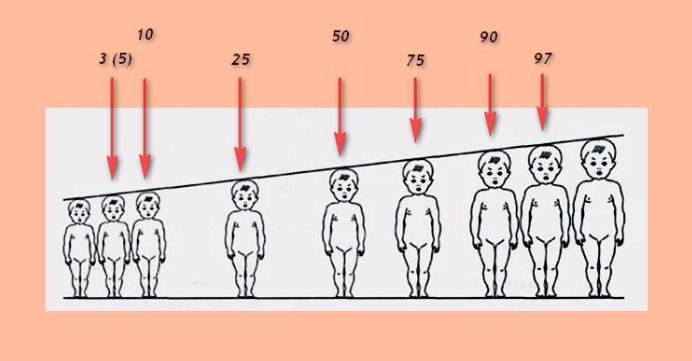
Check
Such indicators can also be represented as a graph, placing the most common "average arithmetic" in the center, and on the parties - an increase and decrease in values.
Cent tables taken by pediatricians were approved after the research of the World Health Organization on the basis of anthropometric data from healthy children of various parts of the Earth. They are, these data, are considered standard.
The most stable factor is growth, in terms of the increase in which one can judge the development of the children's body as a whole. After all, if the skeleton is growing slower than usual at a given age, this suggests that not only bones, but also muscles, organs, etc. develop more slowly. The most intensive increase in body length occurs in the first year of human life, then at a slower pace, but also actively continues until 17 years of age. Next there is a decrease in the pace.
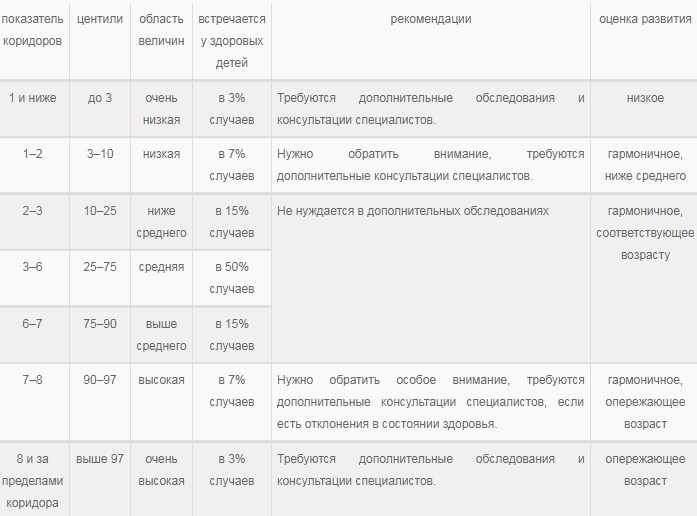
Central Table
Of course, for boys and girls there are various central tables, which is caused by various values \u200b\u200bof values \u200b\u200bfor both sexes: boys are larger and higher in most cases at birth, and also ahead of girls in this regard in the following months.
The most volatile indicator is, of course, the weight. It is most actively increasing in the first year of life, namely - in the first months. Let's look at each table more.
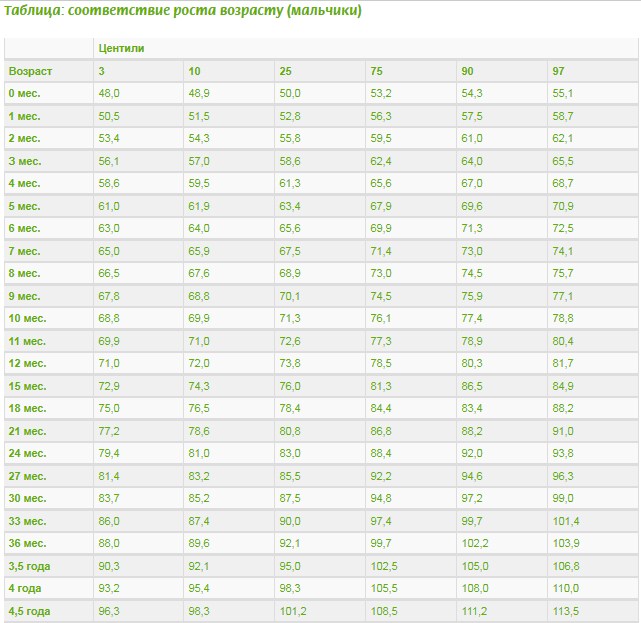
Growth of the boy

Continuation
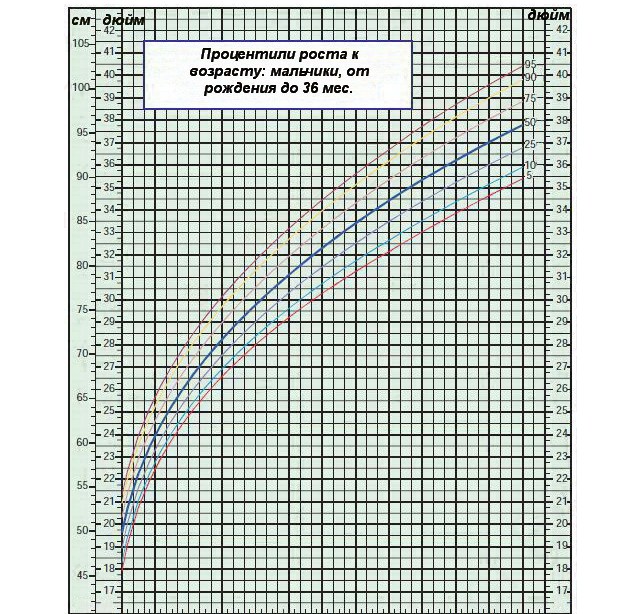
Graphically
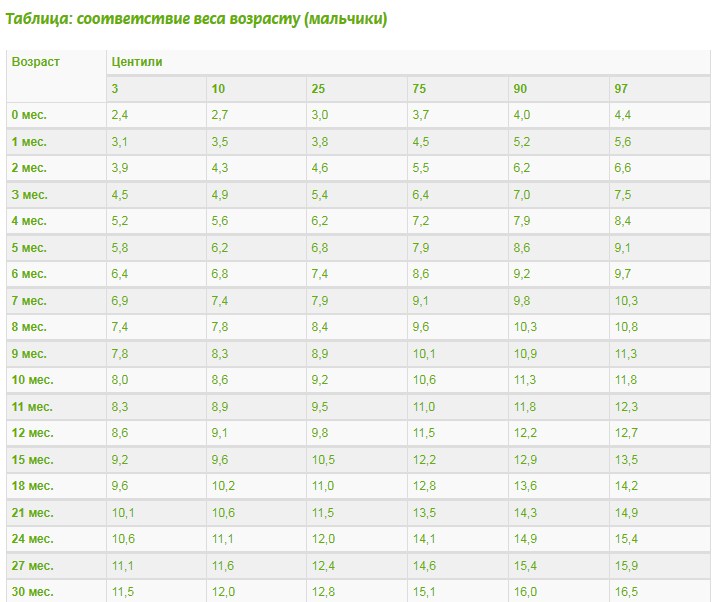
By weight and age
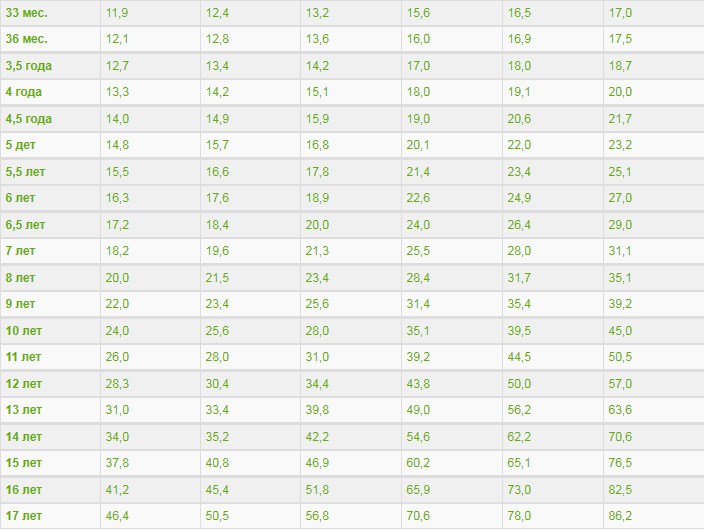
Continuation
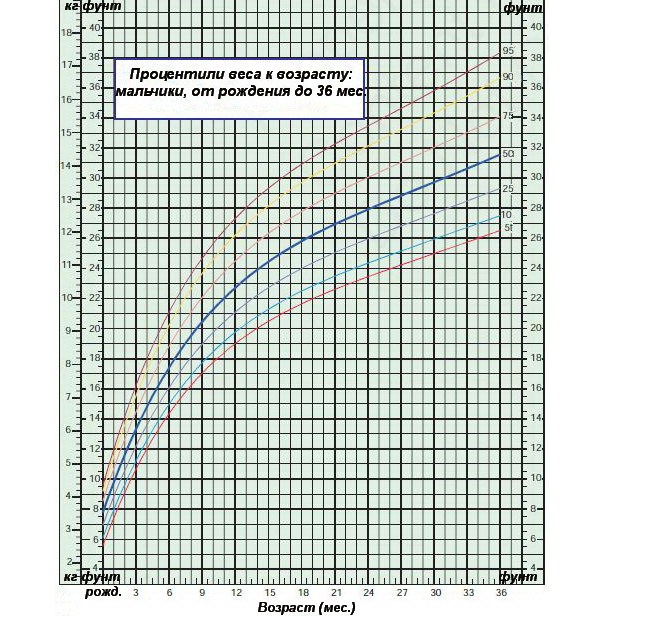
Schedule
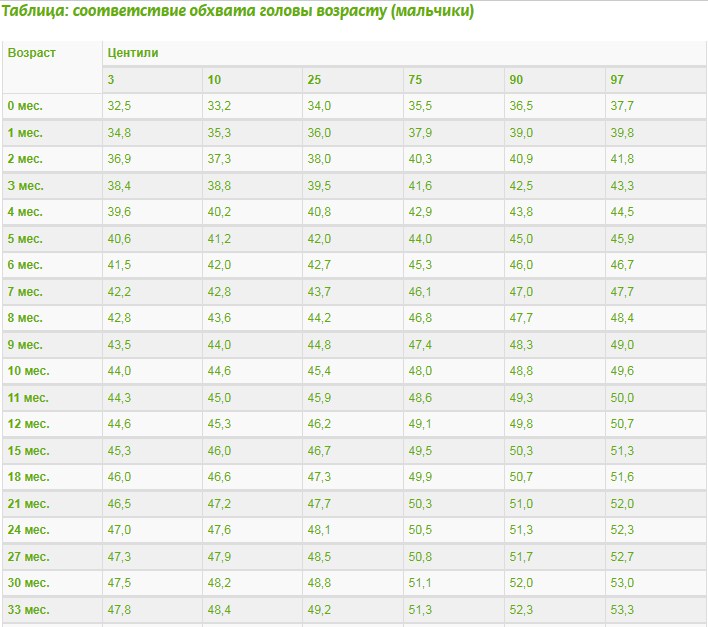
Girth
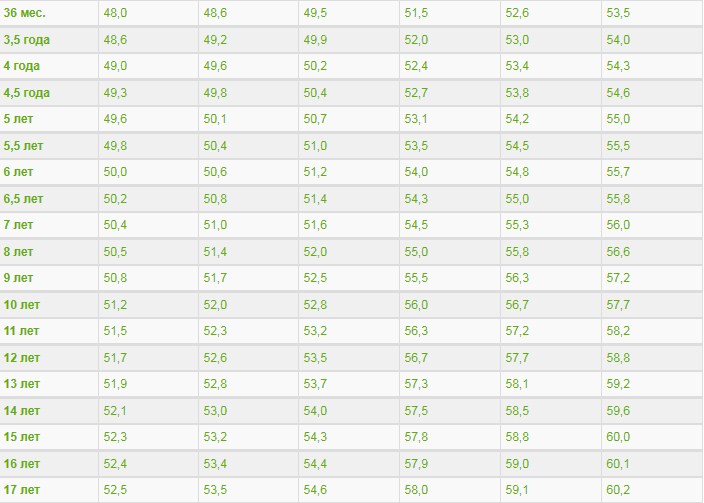
Continuation
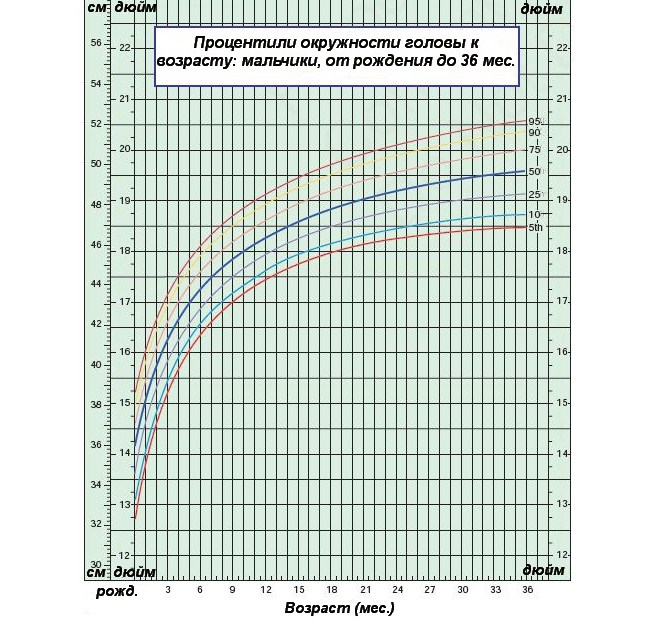
On schedule
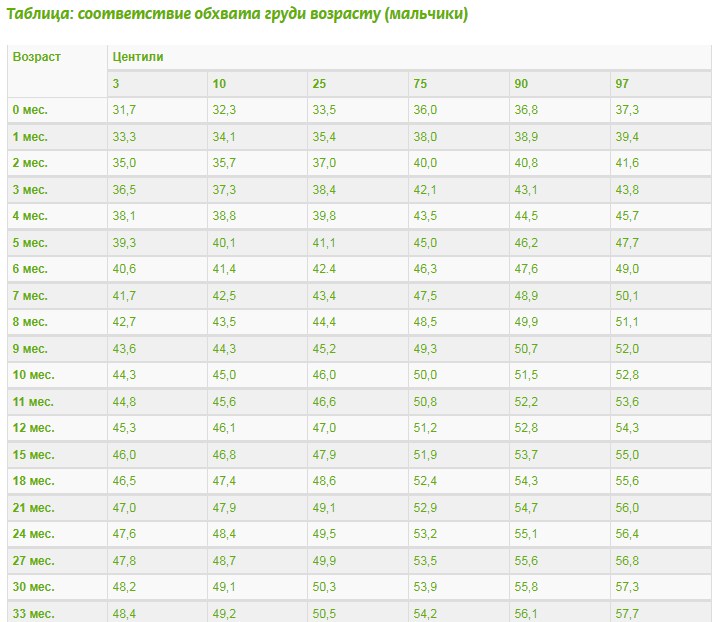
In chest

Continue
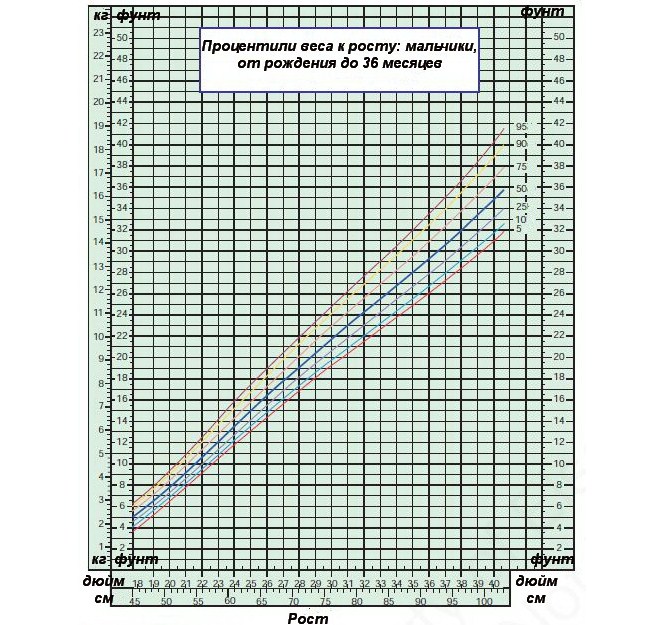
Ratio
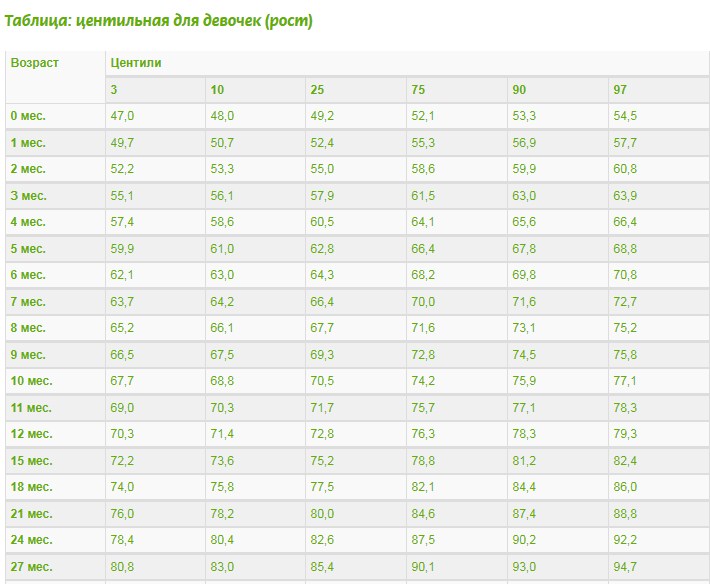
Girl
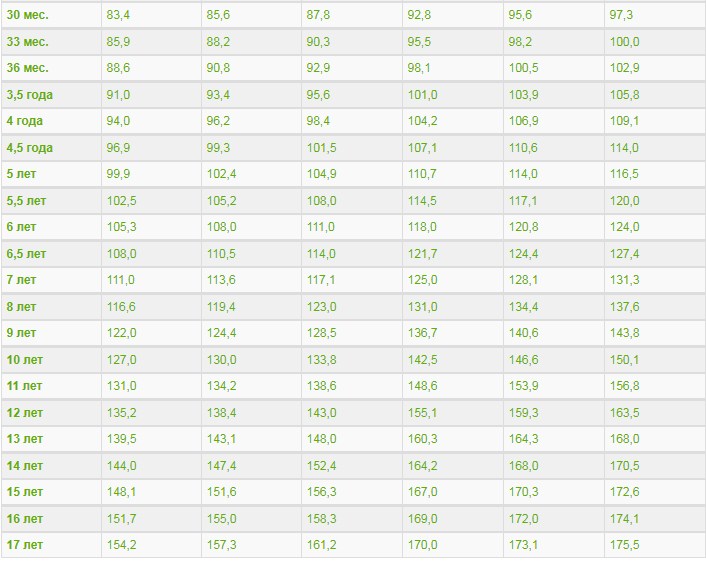
Up to 17.
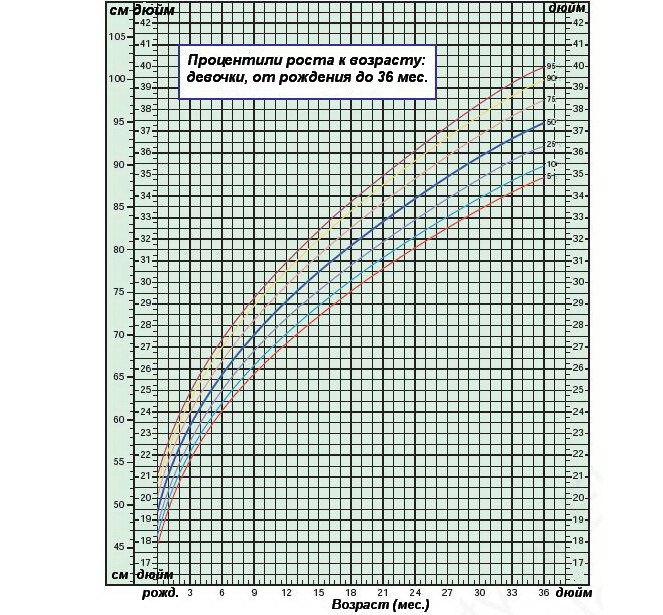
Obfin
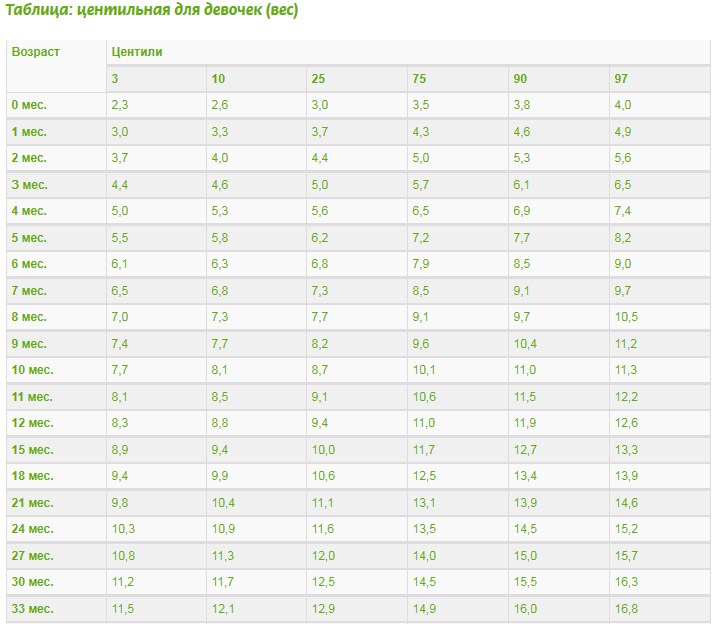
By weight

table
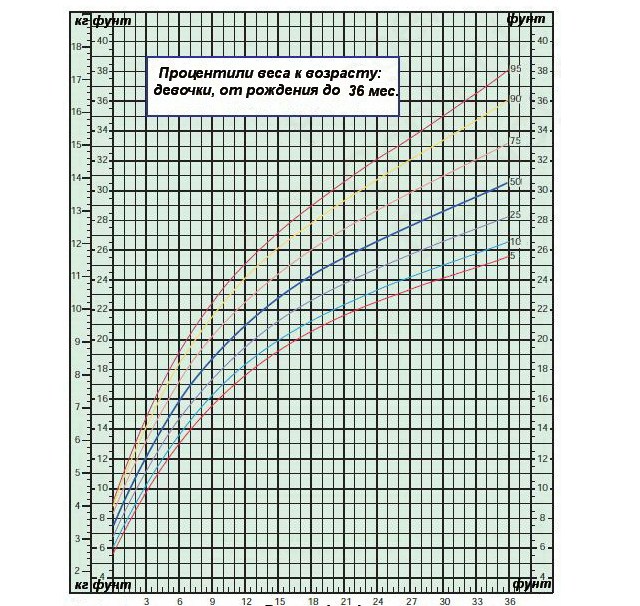
Aspect ratio
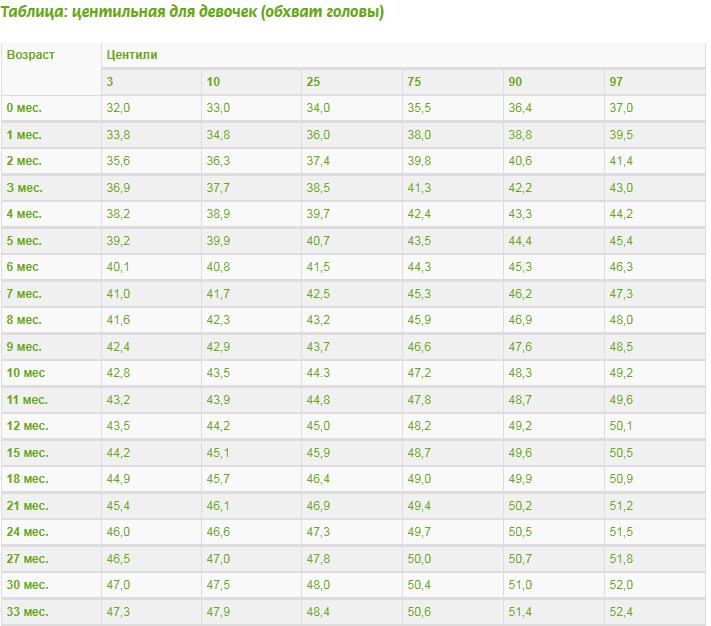
From the smallest
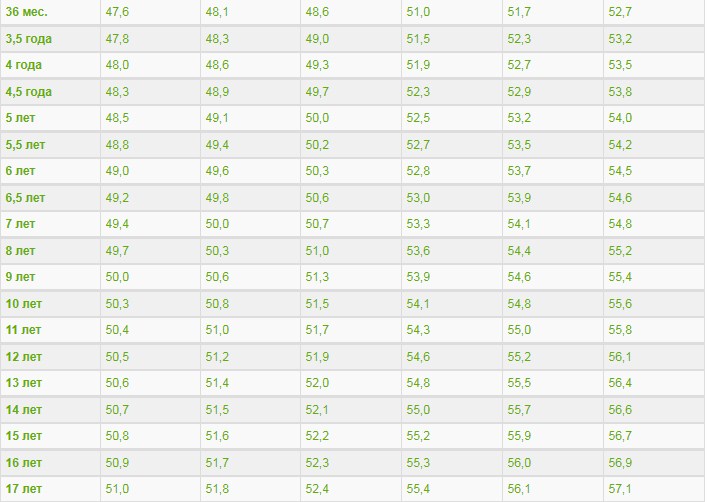
Until agent

Graphically
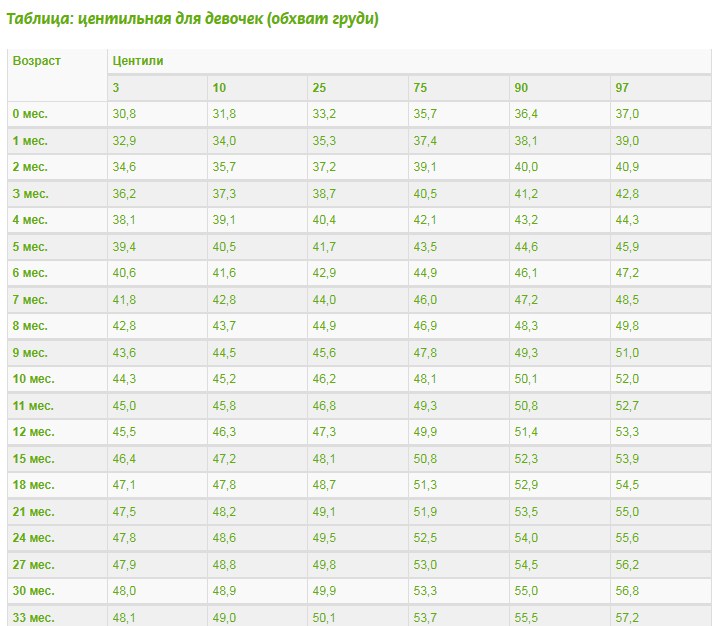
Start
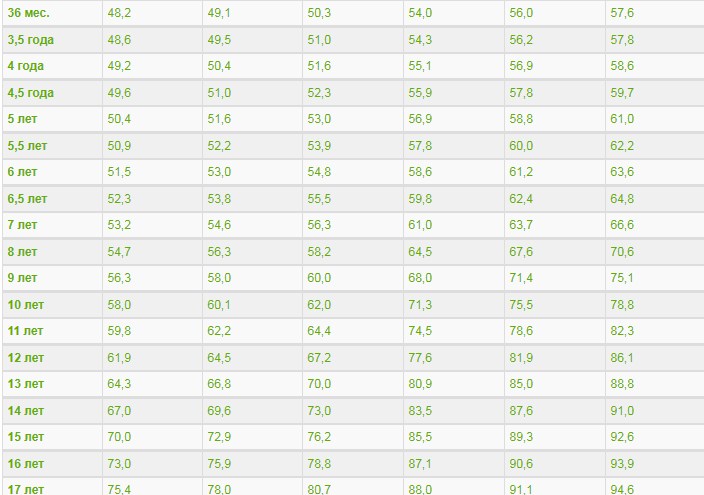
Continuation
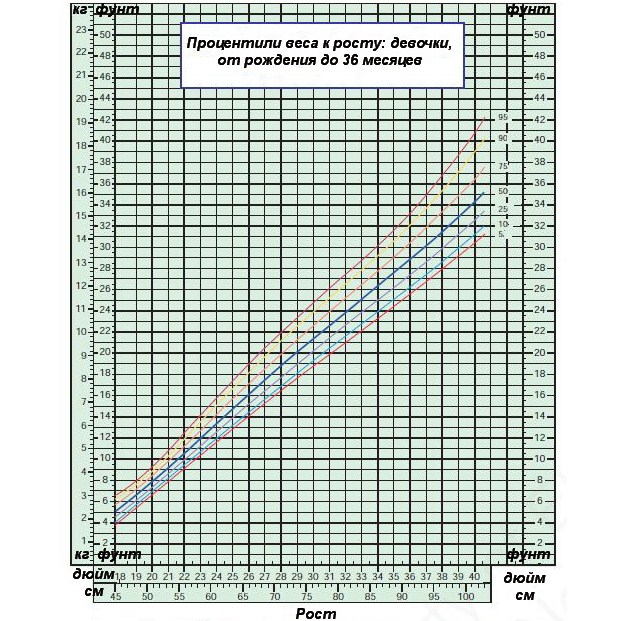
Schedule
Having the possibility of a visual comparison of how the kid grow and develops, and what are the average standards for its age, you can navigate yourself, whether everything is in order or there is a reason for a visit to the pediatrician. By the way, this is the most correct solution that you can accept if it seems to you that the indicators of your baby are far from the norm, because only a specialist can find out if there is a reason for concern and how to solve it.
How to use a centle table?
In order to find out if your child develops according to the standards of its age, choose a cenal table corresponding to the gender semi and mark the string in which the age is marked (taken full years or months). Then move on the line before crossing it with that post, in which the growth values, body weight, breast coverage or head are fixed.
In short, anthropological parameters. Now compare with your values. And depending on what cigned interval is located the parameter you need, how far or close it from the average value, you can judge the proportionality of the crumb development.
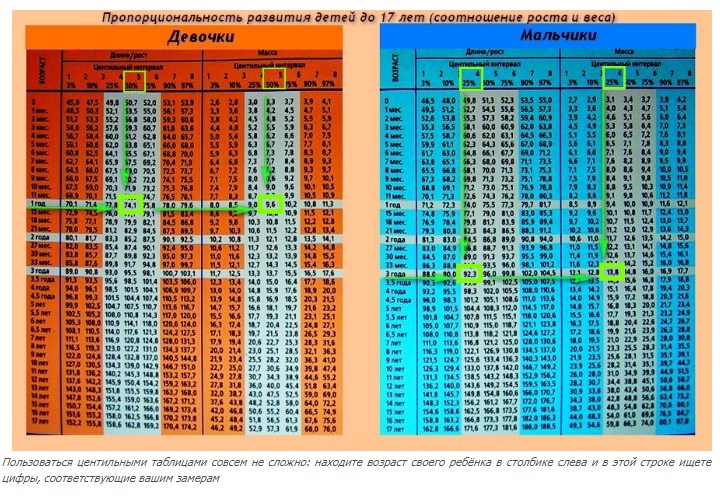
Tables
Missing Tax Tables: What to do?
Remember that you can not put any diagnosis, especially yourself, only on the basis of indicators of the central table. In case you see certain inconsistencies, refer to your pediatrician only it can cause deviation from regulatory values.
The reasons are not necessarily associated with problems in the physical development of the child, because such factors such as hereditary, climatic, national, diet, etc. should be taken into account.
In addition, it is necessary to notice what is the general condition of the baby: whether the dynamic chair is strong, the regular chair, the presence of a healthy appetite, high or low fatigue, a stable healthy temperature - all these moments play a big role and, agree, very individual.

Check
If the anthropological parameters are significantly higher or below the average value, the pediatrician prescribes an additional research complex. It is possible that it will be necessary to attract specialists from different profiles. Only with such a comprehensive examination of the child may be diagnosed and the therapeutic treatment cycle is prescribed, if necessary.
As practice shows if the parents react to significant deviations from the averaged values \u200b\u200bof the centeal table, the normalization of development occurs quite quickly, leading individual indicators of the child to the values \u200b\u200bof the norm.
Therefore, remember that with the help of a centle table you can only notice a possible problem, but to solve it (as well as, whether it exists at all) only a pediatrician.
